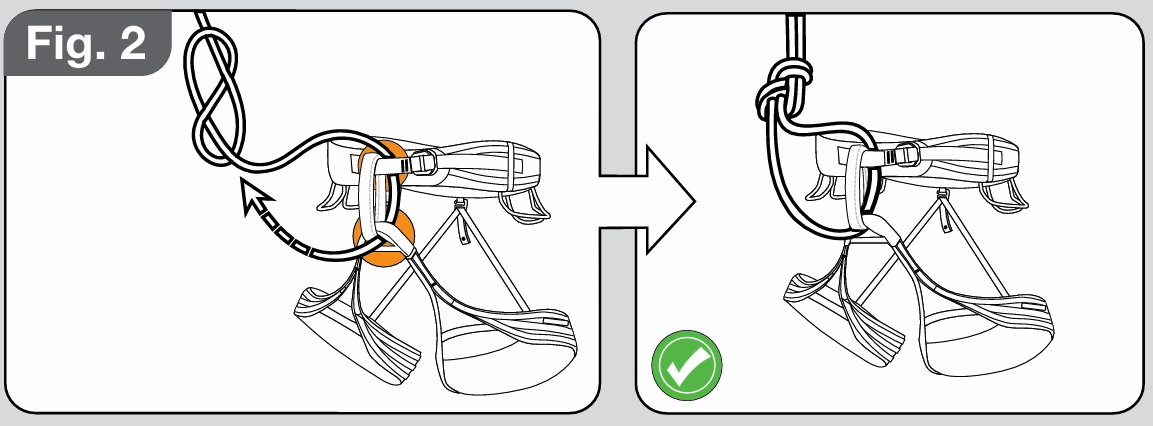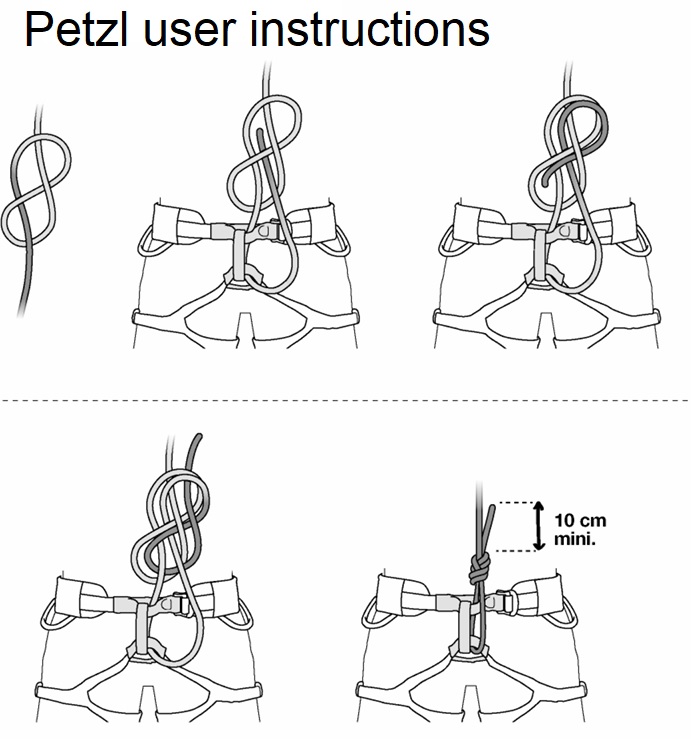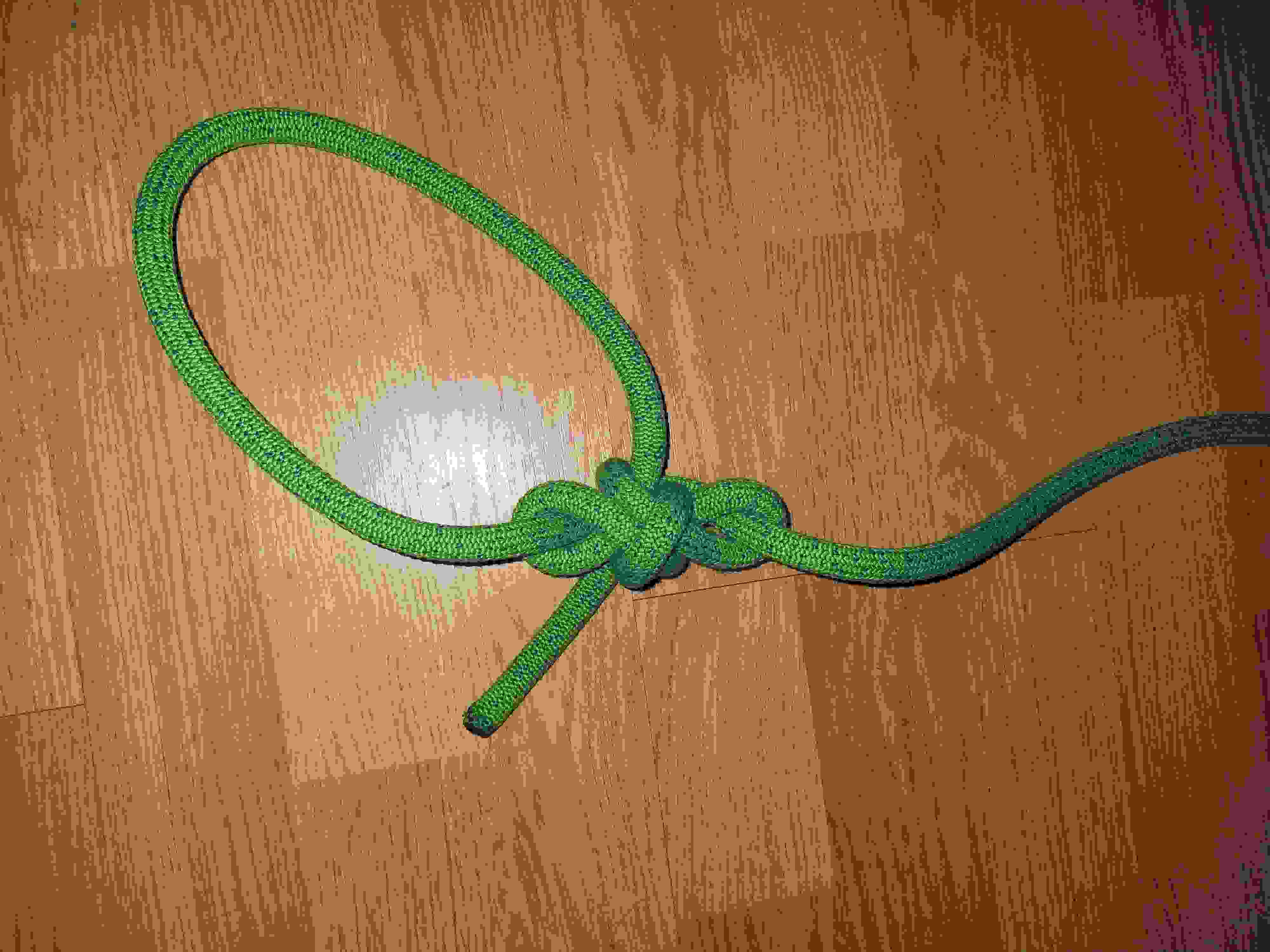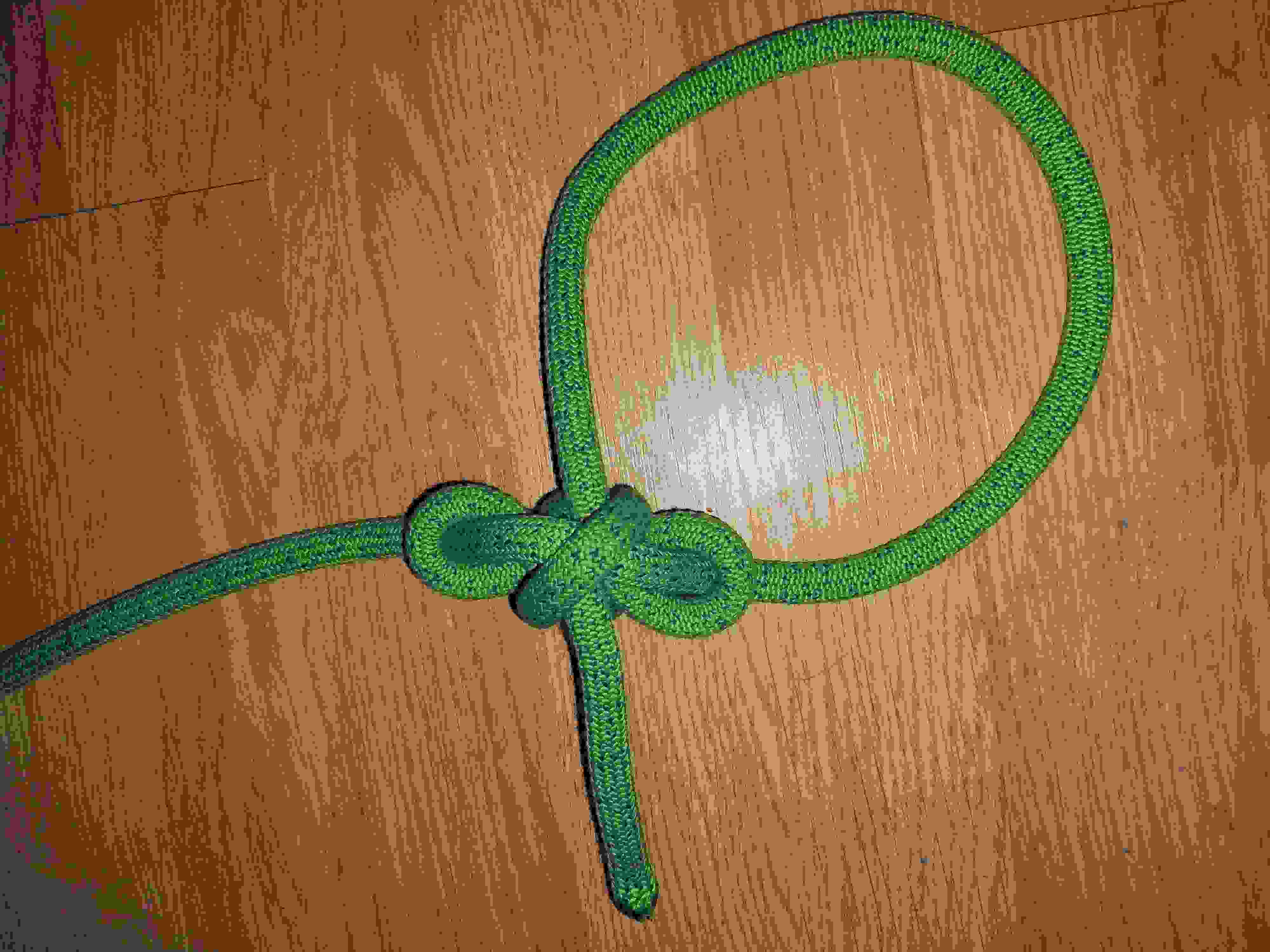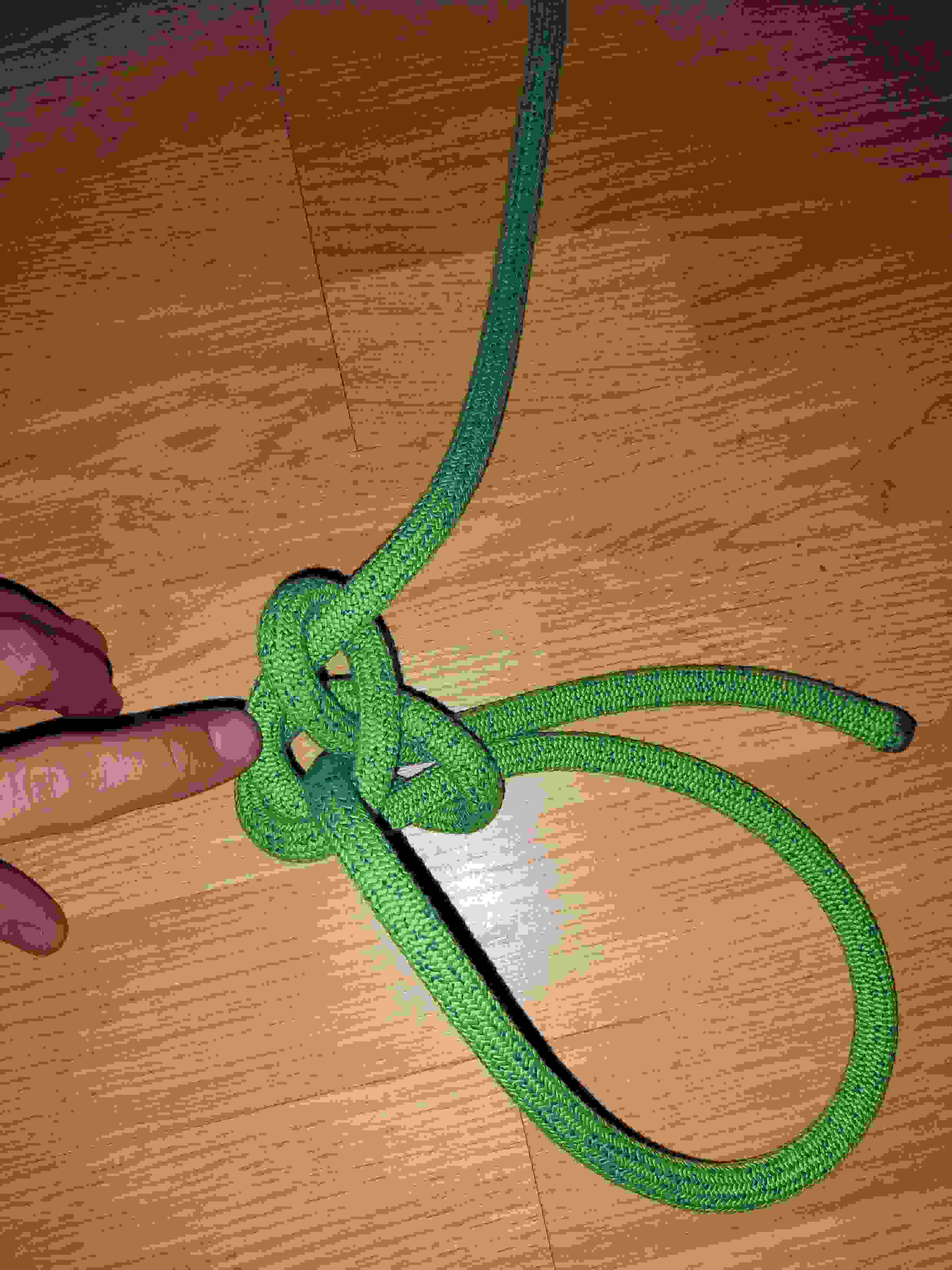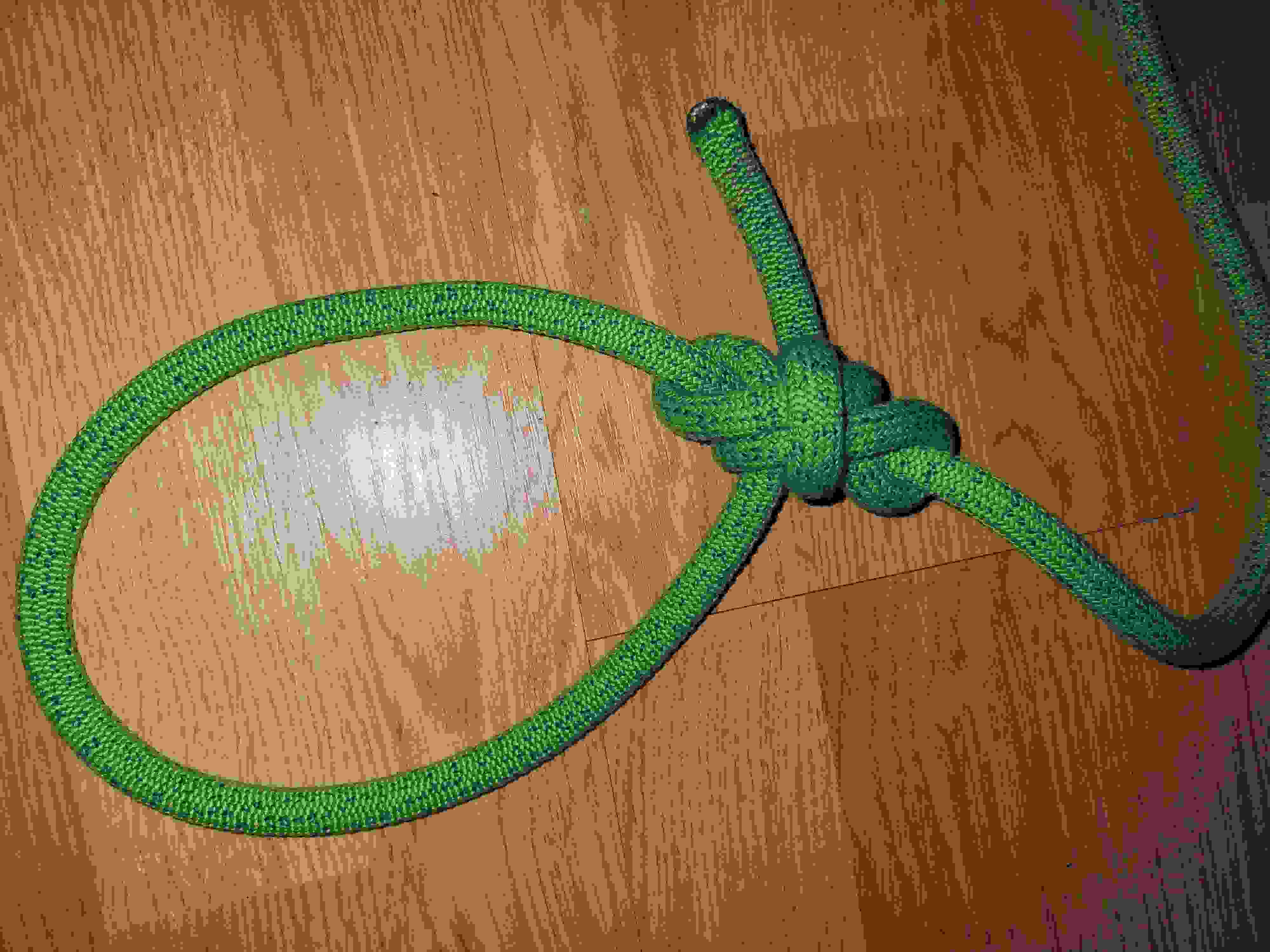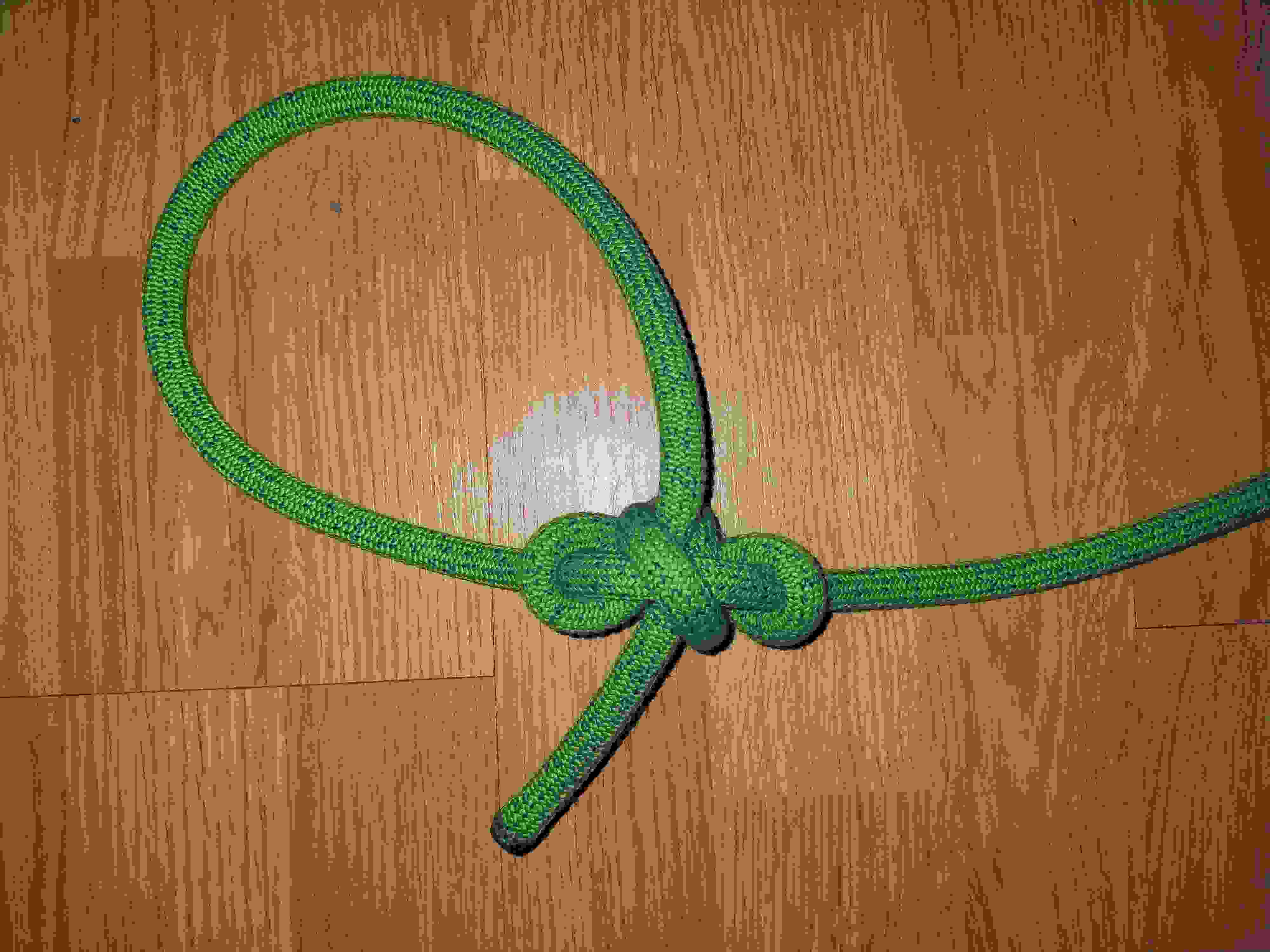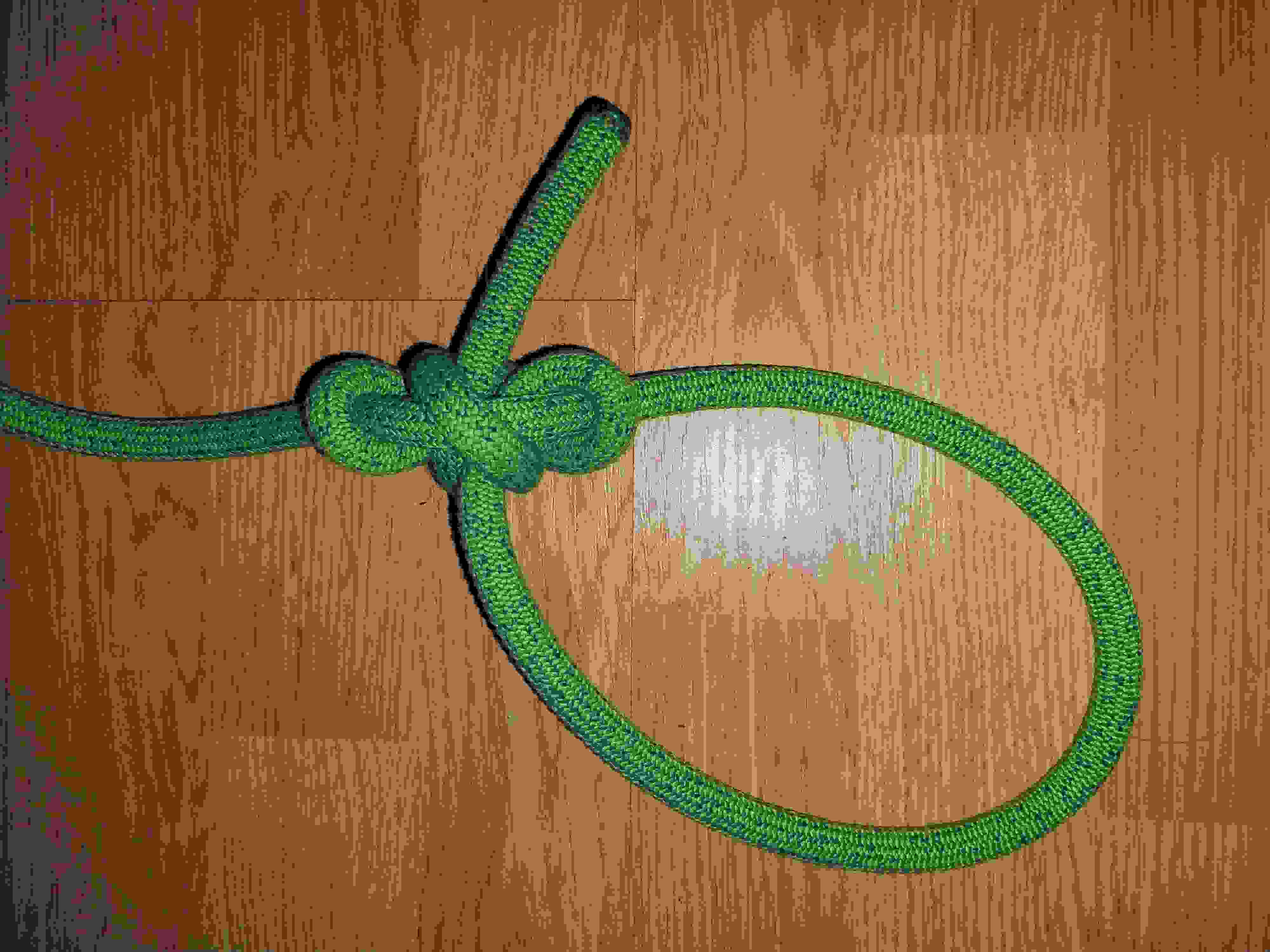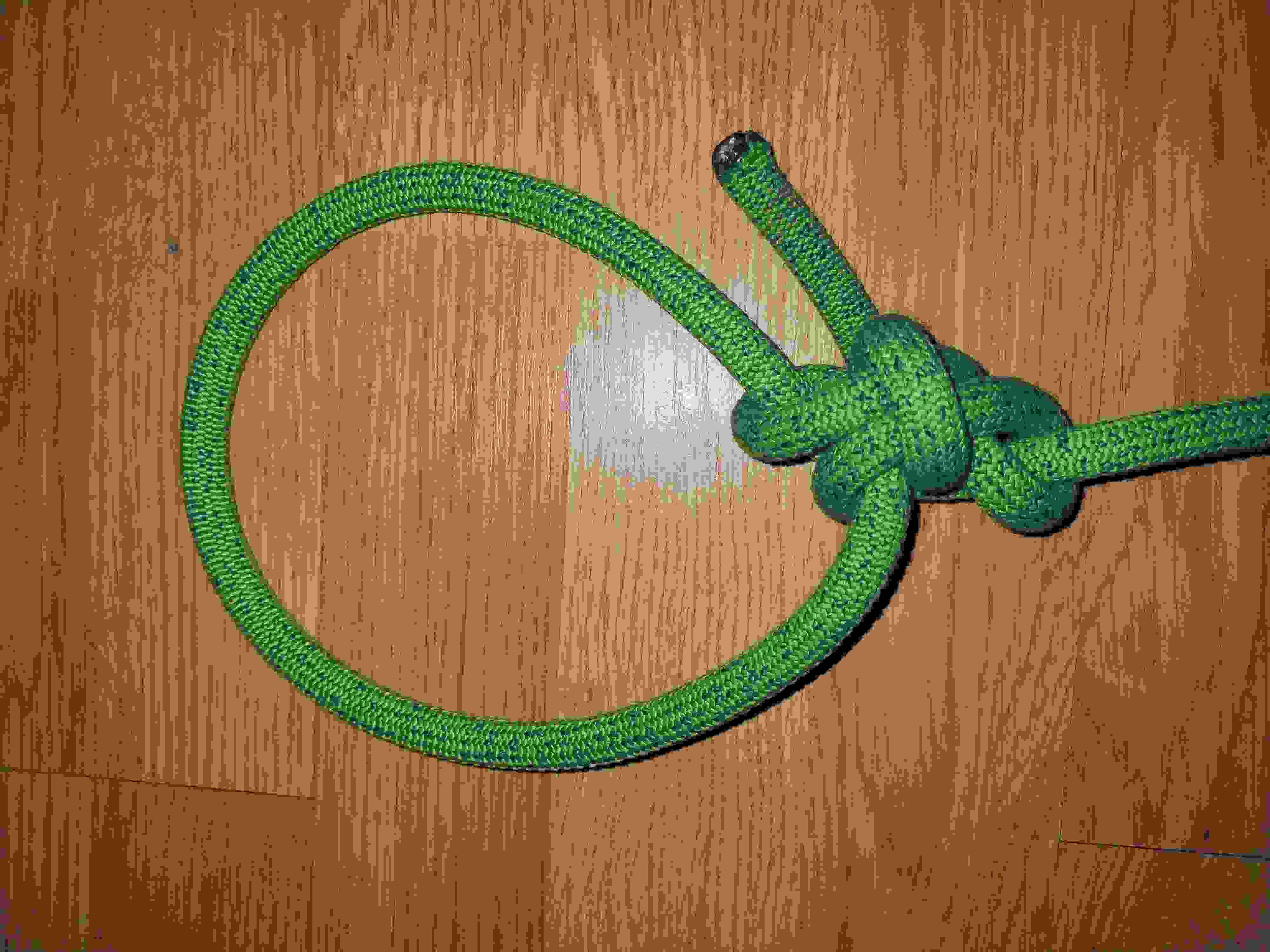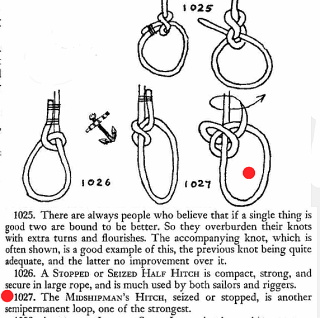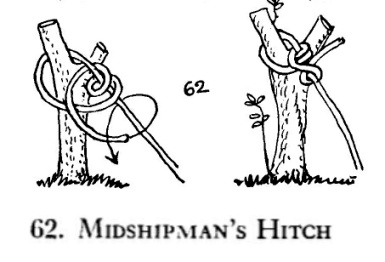With specific regard to my questions at reply #3 and also Dan’s post:
NOTE:
None of the following commentary is intended to be insulting or
disparaging. This is a technical knot geek forum - where complex
topics can be explored. I am proceeding on that basis.
(mere disagreements is not hate speech - disagreements are allowed).
The implication is that ‘tying-in’ to a rock climbing harness with a noose
for lead climbing applications is not optimal and can have damaging
effects to both to the harness and the rope itself.
As a general rule, in the entire history of climbing and mountaineering,
the recommended and optimal knot to use for ‘tying-in’ has been an
‘eye knot’.
Eye knots have a non-slipping ‘eye’ (it does not slip and shrink when loaded).
Example:
A #1047 Figure 8 eye knot (aka Figure 8 loop) is regarded as an optimal choice
for tying-in a dynamic rope to a climbing harness.
Various inherently secure ‘Bowlines’ can also be used in lieu of #1047 Figure 8.
(eg the ‘EBSB Bowline’ is also a satisfactory choice).
A noose is a type of hitch.
A noose has an ‘eye’ that slips/shrinks when loaded.
A classic example of a noose is #409 Poachers noose (Double overhand noose).
Link: https://www.animatedknots.com/poachers-knot
The link above provides a good overview of the function of a noose.
EDIT NOTE:
The ‘eye’ of a noose might resist slipping/shrinking under load.
However, this resistance will only be valid up to a certain threshold of force.
This is true of a ‘Purcell’ - which will slip when a threshold of force is exceeded.
Link: https://www.animatedknots.com/purcell-prusik-loop-knot
By definition, all nooses have the inherent ability to adjust the size of the ‘eye’
without untying the core of the knot.
The ‘eye’ of some nooses will slip immediately as load is applied (eg Poachers noose #409).
The ‘eye’ of other nooses will resist slipping/shrinking when load is applied - but only up to
a certain threshold of force. This is due to force being divided along each leg of the ‘eye’.
The ‘eye’ is generally formed around its own S.Part.
And so load is divided 50% across each ‘leg’ of the ‘eye’.
In some nooses, this 50% loading allows the ‘eye’ to resist slipping.
But this will only be true up to a limiting threshold.
The structure submitted by ‘KnotLikely’ at his opening post appears to be
a noose.
In a subsequent post, ‘KnotLikely’ suggest that he ties-in with a noose
for the purposes of lead climbing.
The question is one of intent.
That is’:
"Is ‘KnotLikely’ intentionally tying-in with a noose (via a deliberate and willed act)?
If yes, this is exposing himself to high levels of risk, and goes against all
harness manufacturer recommendations.
Please refer to the attached images below.
Black Diamond and Petzl are both major manufacturers / suppliers of climbing harnesses.
I have extracted images from their user instructions.
Note that both recommend an ‘eye knot’ for tying-in.
The ‘eye’ is non-slipping under load.
…
Commentary:
‘KnotLikely’ might make the argument that his presented knot does not act
like a noose - and has a non-slipping ‘eye’.
The evidence for this is tendered in the form of “life experience”.
However, the evidence is not peer reviewed (not tested by others).
Also, there is no data showing how testing was conducted as part
of a verification process to confirm that the ‘eye’ is non-slipping under
free-fall arrest conditions.
The EN892 test requires an 80kg mass to be dropped on a sample length of dynamic rope as per the link below:
Link: https://www.theuiaa.org/documents/safety-standards/Pictorial_UIAA101%20Dynamic%20Ropes.pdf
The test sample must survive 5 falls.
NOTE:
The test is not assessing a climbing harness - only the rope.
In the EN892 test, a #1047 F8 eye knot is specified (not a noose).
It is unknown if a rope would survive 5 test falls using a noose.
I don’t know of any manufacturer that would recommend a noose as a tie-in
knot to a climbing harness. In my lifetime, I’ve never seen any user instructions
that recommend using a noose as a tie-in knot.
In fairness to ‘KnotLikely’, he may make the argument that his presented knot
isn’t a noose. He may have a different definition of what a noose is.
Or, he might argue that his ‘noose’ actually has an ‘eye’ that is non-slipping
under dynamic/shock loading. He might insist that it is non-slipping.
However, extraordinary claims require extraordinary evidence.
